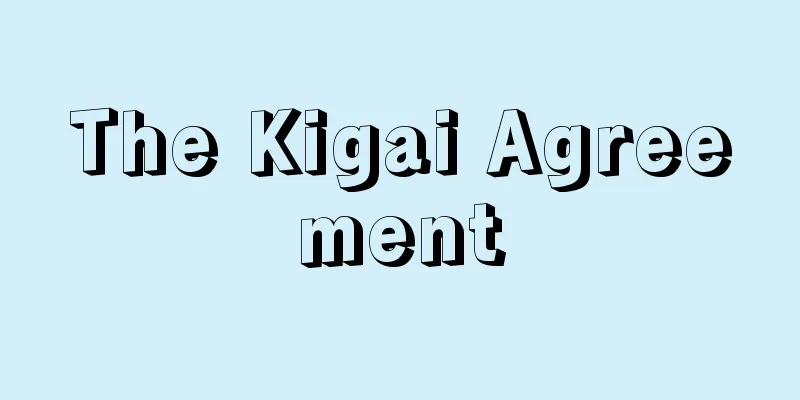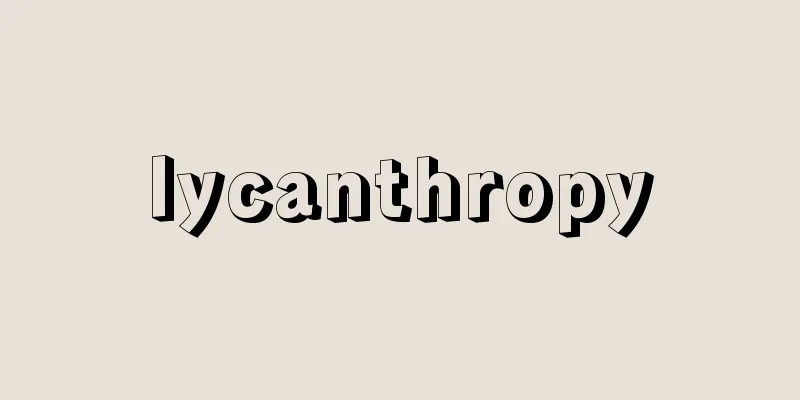Alphabet - Alphabet (English spelling)

|
A writing system of Eastern Mediterranean origin, in which each letter essentially represents one sound, used today to write English and many other languages. The name alphabet comes from the Greek names for the first two letters of the writing system, alpha and beta, which are linked to the ancient Semitic words for "cow" and "house," respectively. There are many unknowns about the circumstances surrounding the creation of the alphabet, but it is believed to have been created by the Phoenicians, a Semitic people in the eastern Mediterranean region, sometime between 2000 and 1500 B.C. A script close to the original alphabet is the Sinaitic script, discovered in the Sinai Peninsula in the early 20th century, and the Byblos script, discovered around the same time at the site of Byblos, which are thought to act as a bridge between ancient Egyptian hieroglyphics and the Phoenician alphabet. The Sinaitic and Phoenician alphabets consisted of 22 letters and represented only consonants, a system that is still used in Arabic and Hebrew today. These early alphabets were created using the principle of acrophony, whereby a figure of a word represented the initial sound of the word, such as the figure of a cow representing the initial sound of the word 'alef' (a kind of guttural sound), and the figure of a house representing the initial sound b in the word bet. Early Phoenician inscriptions, such as the Shapatbaal inscription, the King Ahiram inscription, the Gezer Agricultural Calendar, and the King Mesha inscription, date from the 13th to the 9th centuries BC. The Phoenician alphabet was widely used by the Phoenicians as they migrated to various areas around the Mediterranean Sea. The Greeks borrowed the Phoenician alphabet to write Greek, using some of the Phoenician letters to write vowels. This is how the original forms of today's letters A, I, U, E, and O were created. These Greek letters are still used to write modern Greek. The Greek alphabet also gave rise to Slavic alphabets, which are used to write today's Russian, Bulgarian, and Serbo-Croatian languages. On the other hand, the Etruscans, an ancient people in central Italy, borrowed the Greek alphabet, and the Romans from Latium borrowed it to write Latin. This Latin alphabet (Roman script) was later used to write Western European languages and came to be considered the representative alphabetic writing system. The Latin alphabet contains most of the modern alphabet, but in ancient times there was no distinction between C and G, or U and V, and the distinction between I and J is a modern one. Also, while alphabetic writing systems originally had each letter representing one sound (originally a single consonant), letters representing multiple sounds have been added, such as the Greek letter ψ [ps], the Latin letter x [ks], and the Russian letter щ [ʃtʃ]. From the Phoenician alphabet, the Aramaic alphabet was born, which developed into many writing systems in the East. These include Syriac, Iranian, and Mongolian scripts, and the Armenian and Georgian scripts in the Caucasus are still in use today. The Aramaic alphabet was also introduced to India around the 5th century BC, giving rise to the Indian and Southeast Asian scripts. In terms of the structure of the characters, the monophonic alphabetic characters were combined with symbols representing vowels to become syllabic characters like the kana characters in the Japanese writing system, and the number of characters increased to several hundred. The same can be said about the Ethiopic alphabet, which arose via the Phoenician and South Arabian scripts. Although these syllabic characters are writing systems that belong to the alphabetic system, they can no longer be considered alphabetic. The original alphabetic writing system was characterized by the extremely small number of characters compared to the cuneiform and hieroglyphic systems that had been used before it: the Phoenician alphabet used 22 characters, and the classical Greek alphabet only 24. Later, as it was used to represent the phonetics of modern languages, the number of characters increased slightly, to 26 in English and 33 in Russian, but this number of characters is easy to learn, and has contributed to an increase in literacy rates, the spread of knowledge, and the efficiency of information exchange. On the other hand, alphabetic characters are also used in writing systems that do not belong to the major alphabetic systems, such as the approximately 24 monosyllabic characters used in ancient Egyptian hieroglyphics and the cuneiform script used in the ancient city-state of Ugarit on the eastern Mediterranean coast, which contains only 30 consonants. In general, the basic phonemes of a language or the characters that represent them are sometimes called the alphabet of that language. [Yajima Fumio] ©Shogakukan "> Alphabetical Lineage ©Shogakukan "> Alphabetical Comparison Table Source: Shogakukan Encyclopedia Nipponica About Encyclopedia Nipponica Information | Legend |
|
原則として1文字が1音を表す東地中海地方起源の文字体系で、今日では英語をはじめとする多数の言語の表記に用いられている。アルファベットという名称は、この文字体系の最初の2字のギリシア名アルファおよびベータから出ているが、これらは古代セム語でそれぞれ「牛」および「家」を意味する語とつながりをもつ。 アルファベット成立の事情については不明の点が多いが、紀元前2000~前1500年間に、東地中海地方でセム語族に属するフェニキア人によってつくりだされたと思われる。アルファベットの祖型に近いものとしては、20世紀初頭にシナイ半島で発見されたシナイ文字があり、またほぼ同じころビブロス旧址(きゅうし)でみつけられたビブロス文字は、古代エジプトのヒエログリフとフェニキア・アルファベットの橋渡しをなしているものと考えられる。 シナイ文字およびフェニキア文字は22個からなり、子音しか表記しなかったが、この方式は今日使われているアラビア文字やヘブライ文字の用法に継承されている。この初期アルファベットはアクロフォニー(頭音)の原理によってつくりだされた。これは、ある語の図形でその語の頭音を代表させるもので、たとえば「牛」の図形でその語'alefの頭音’(一種の喉音(こうおん)を表す)を、また「家」の図形でその語bētの頭音bを表した。初期のフェニキア文字刻文としては、シャパトバアル刻文、アヒラム王刻文、ゲゼルの農業暦、メシャ王刻文などがあり、前13~前9世紀のものとされる。 フェニキア人は地中海周辺各地に移民したため、フェニキア文字は広範囲に使用された。ギリシア人はフェニキア文字を借用してギリシア語を表記したが、このとき若干のフェニキア文字を母音の表記用に用いた。こうして今日のA、I、U、E、Oなどの原型ができた。このギリシア文字は今日でも現代ギリシア語の表記に用いられている。またギリシア文字からスラブ系諸文字がつくられ、今日のロシア語、ブルガリア語、セルボ・クロアチア語などの表記に使われている。他方、中部イタリアの古代民族エトルリア人はギリシア文字を借用したが、ラティウム出身のローマ人はこの文字を借りてラテン語を表記するようになった。このラテン文字(ローマ字)は、そののち西ヨーロッパ諸語の表記に使われるようになり、アルファベット文字体系の代表とみなされるに至った。 ラテン文字は近代のアルファベットの大半を含んでいるが、古期にはCとG、UとVの区別がなく、IとJの区別も近代になってからのものである。また、アルファベット文字体系は本来は1文字が1音(もとは単子音)を表したが、ギリシア文字のψ[ps]、ラテン文字のx[ks]、ロシア文字のщ[ʃtʃ]などのように複音を表すものも付け加えられている。 フェニキア文字からアラム文字が生じて、東方における多くの文字体系に発展した。シリア文字、イラン系諸文字、モンゴル文字などがそれであり、カフカスのアルメニア文字とジョージア(グルジア)文字は今日も用いられている。またアラム文字は前5世紀前後にインドに伝えられ、インド系諸文字および東南アジア諸文字を生ぜしめた。文字の構造の点からみれば、単音表記のアルファベット文字は、ここでは母音を表す記号と組み合わされて、日本文字体系における仮名文字のような音節文字になり、文字数も数百個に増えた。同じことはフェニキア文字、南アラビア文字を介して生じたエチオピア文字についてもいうことができる。これらの音節文字はアルファベット大体系に属する文字体系ではあるが、もはやアルファベット式ということはできなくなっている。 本来のアルファベット文字体系の特徴は、それ以前に使われていた楔形(くさびがた)文字やヒエログリフの体系に比して文字数がきわめて少ない点にあり、フェニキア文字では22個、古典期のギリシア文字では24個のみが使われた。のちに近代諸語の表音に使われるようになり、英語で26、ロシア語で33というように若干文字数が増えたが、この程度の文字数は学習が容易であり、識字率の増大、知識の普及、情報交換の能率化に貢献している。 他方、アルファベット大体系には属さない文字体系にも、アルファベット式文字が使われていることがある。古代エジプトのヒエログリフで使われている約24個の単音文字、東地中海岸の古代都市国家ウガリットで使われていた、30個の子音のみを記す楔形文字などがあげられる。 なお、一般に各言語がもっている基本的音韻あるいはそれを表記する文字を、その言語のアルファベットとよぶ場合もある。 [矢島文夫] ©Shogakukan"> アルファベットの系譜 ©Shogakukan"> アルファベット対照表 出典 小学館 日本大百科全書(ニッポニカ)日本大百科全書(ニッポニカ)について 情報 | 凡例 |
Recommend
Sennosuke Yokota
Year of death: February 5, 1925 Year of birth: 8/2...
Buying and selling bonds with repurchase agreements
…Repurchase agreements are transactions conducted...
Masanaga Hatakeyama
A military commander during the Muromachi and Sen...
Yoriaki Omori
… [Ikura Taizo] [history] Hayakawa Manor, which d...
Mima [town] - Mima
An old town in Mima County in northern Tokushima P...
Picture book - Ezoushi
→Storybook Source: Shogakukan Encyclopedia Nippon...
Iijimasu Ikuchimushi - Iijimasu Ikuchimushi
...They are similar to the polychaete Spionidae a...
Kanamori family
A feudal lord in the early modern period. Sadachik...
poetry
〘Noun〙 (poetry)① Poetry. Poesy. ※Yatabe Ryokichi, ...
Breast mirror - escutcheon
When you look at a dairy cow from behind, you can ...
Gigantism
This refers to an abnormal increase in height, re...
Njörðr - Njör r
...According to Gylfaginning in Snorri Sturluson&...
Tokyo Winter Hazel - Tokyo Winter Hazel
An evergreen shrub or small tree of the Hamamelid...
Robert le diable (English spelling)
…In 1816, he went to Italy, where he performed op...
Wilcox, FM - Wilcox
...There are countless other works that are neith...
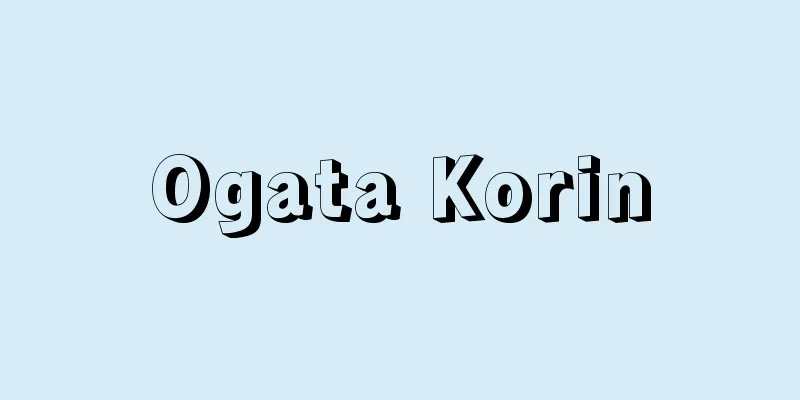
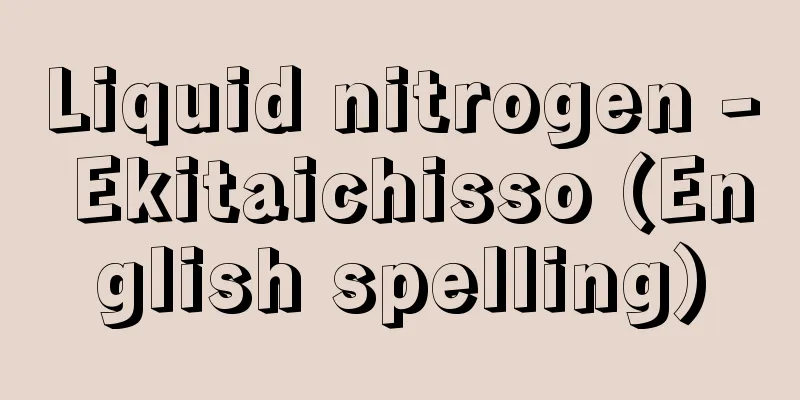


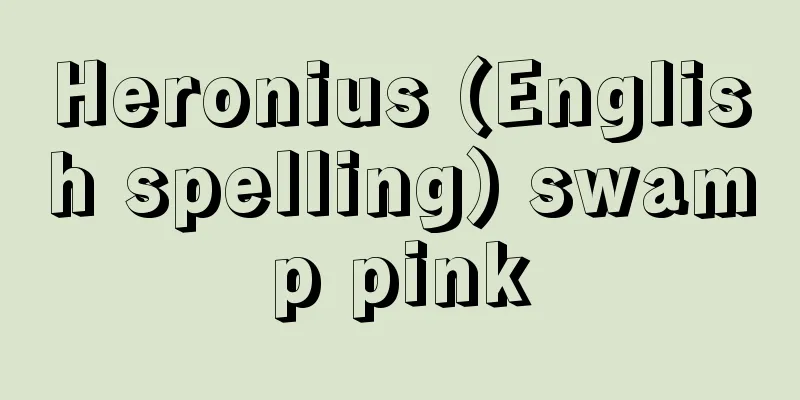


![Kasukawa [village] - Kasukawa](/upload/images/67cb33e9ad8ee.webp)
